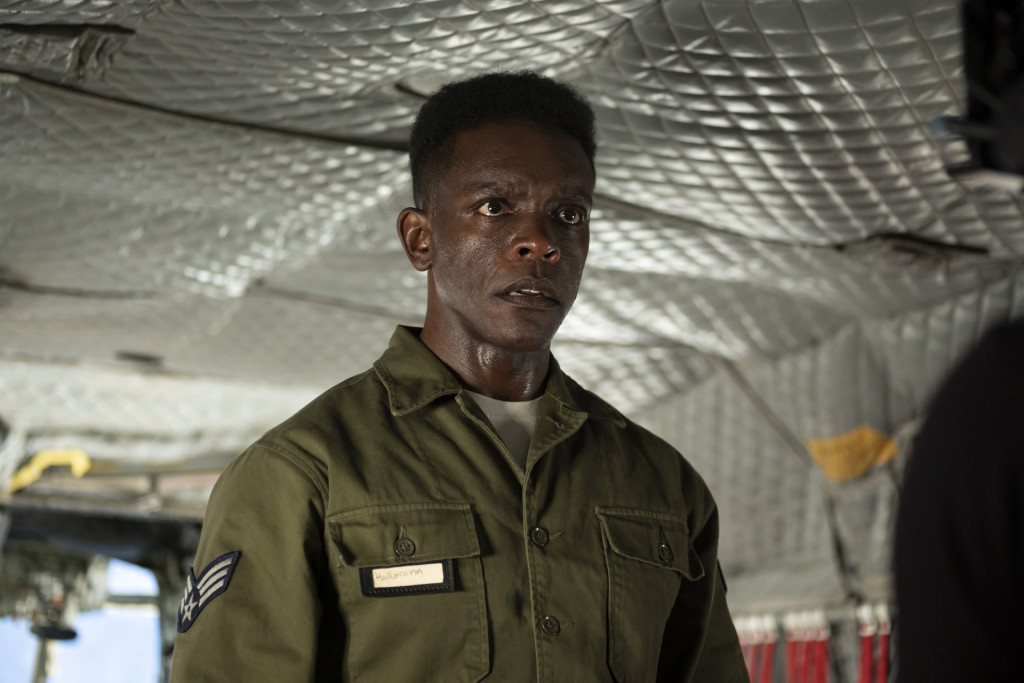Is it just me, or did we all underestimate just how “Black” this show was going to be? Sure, we knew the cast listed several Black actors, but I don’t think many of us realized just how deeply centered the story would be around a Black family, and how seamlessly that choice would expand the world of It in a way that feels new, intentional, and long overdue.
Now, five episodes in (with episode 5 airing just last night), the picture is even clearer. Each episode continues to build on the last, pulling us deeper into the narrative and leaving us genuinely anticipating the next week’s chapter.
And trust, this show isn’t slowing down.

When we interviewed Stephen Rider, who plays Hank Grogan, he hinted at exactly that.
“It was a dream come true because it’s not just a Black project. This is It, and Stephen King talks about the Black Spot,” he shared.
But then he said something that hits even harder now that we’re mid-season: “When people see six, seven, and eight—I mean all of them are great—but you’re gonna be blown away.”
And honestly? After witnessing how well the show has been building its world, I believe him.
Rider went on to praise the show’s creative team for their courage and intentionality:
“What I love is that Andy [Muschietti] and Barbara [Muschietti] and Jason [Fuchs] and Brad [Caleb Kane] had the guts and the courage to write about something that encompassed a world with Black folk, Indigenous folk, and put us at the center of this story. So it makes you feel seen.”
That feeling of being seen isn’t something Black audiences have historically gotten from the horror genre.
For so many years, Black characters in horror have often been disposable, sidelined, or written without depth. Welcome to Derry disrupts that pattern.
The series doesn’t just sprinkle diversity on top of a familiar story; it reconstructs the foundation by centering Black and Indigenous perspectives in a world that has traditionally ignored them.
The characters have nuance, authority, vulnerability, humor, and agency. They aren’t props. They aren’t caricatures. They aren’t included just to be included.
They’re written with the same respect and complexity afforded to their non-Black counterparts.

One of the strongest aspects of the show is how it acknowledges race without making it the entire story. Taylour Paige’s character delivers one of my favorite standout moments of the season so far when she looks a police chief dead in the eye and warns:
“If you don’t let me see Hank Grogan right now, by tomorrow morning, I’ll have MLK, JFK, RFK, and a whole bunch of other FKs breathing down your neck.”
It was direct, intentional, and rooted in the reality of the era, without allowing the characters to be defined solely by oppression.
They’re “not in the South,” as the show reminds us, which gives them room to walk with more confidence and assertiveness. It’s subtle, but it’s powerful.

Another standout element is the mysticism tied to Chris Chalk’s character, Dick Hallorann. Black spirituality and intuitive power are woven into his storyline in a way that brings excitement to fans like me, fans who love those kinds of elements in TV and film but rarely see them portrayed through Black characters.
HBO has a track record of exploring mystical narratives with Black leads (Watchmen, Lovecraft Country), and Welcome to Derry carries that torch. It feels organic. And it strengthens the lore of It in ways the original films and books only hinted at.
What makes Welcome to Derry special is that it doesn’t treat inclusion like a checkbox. Instead, Black and Indigenous characters are integrated into the narrative with emotional depth, cultural specificity, and real importance to the plot.
And with Rider teasing episodes 6, 7, and 8 as the ones that will “blow us away,” it’s clear the season is building toward something big.
This is how you expand a legacy franchise while honoring its history and widening its universe. It’s what representation looks like when it’s done with intention.
Kudos to Andy Muschietti, Barbara Muschietti, and Jason Fuchs for crafting a horror story that doesn’t just scare us—but sees us.




